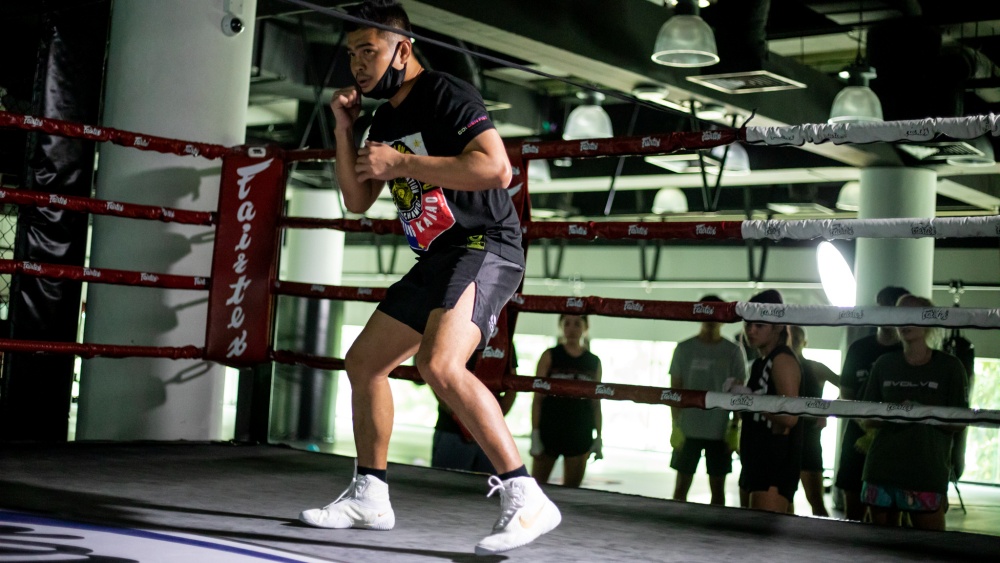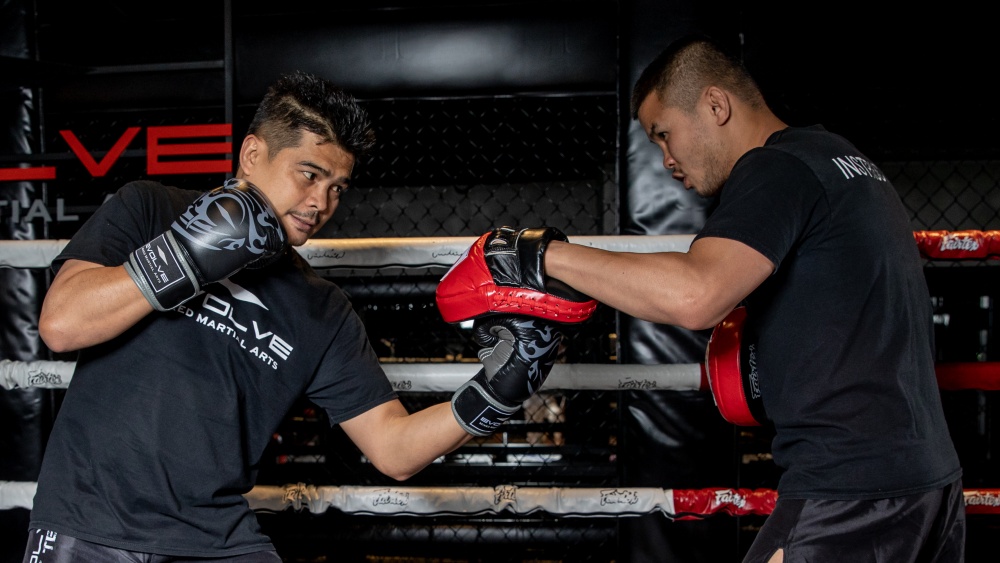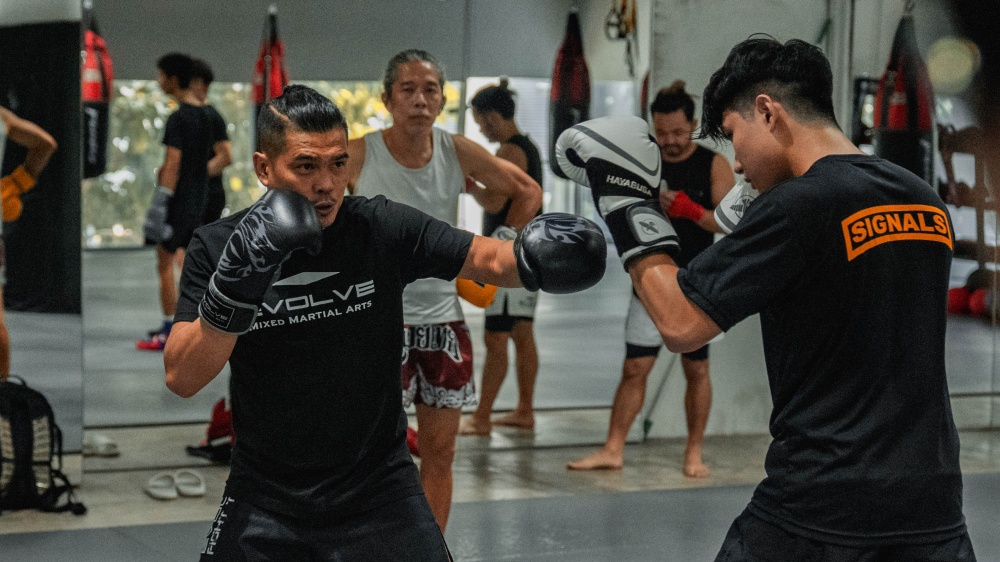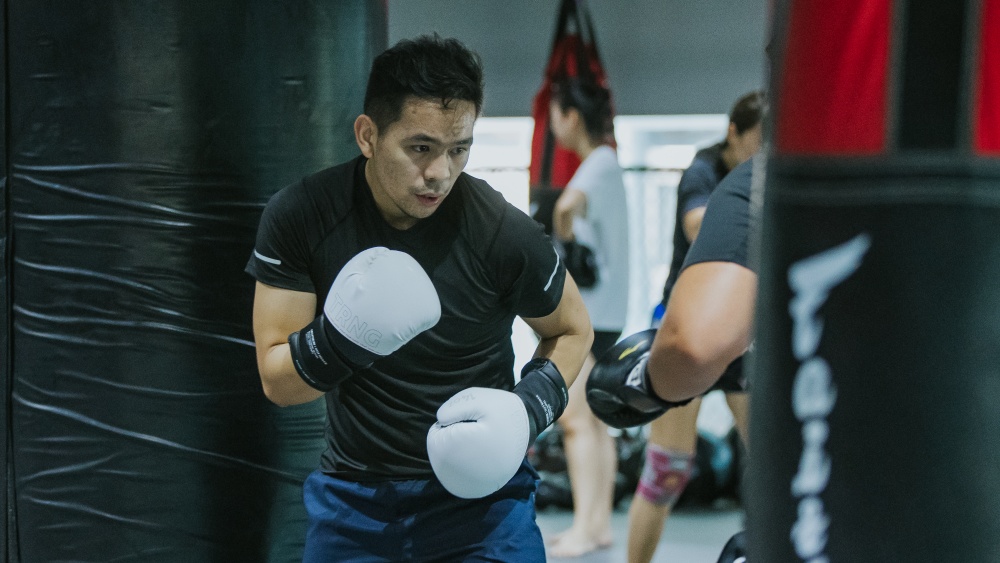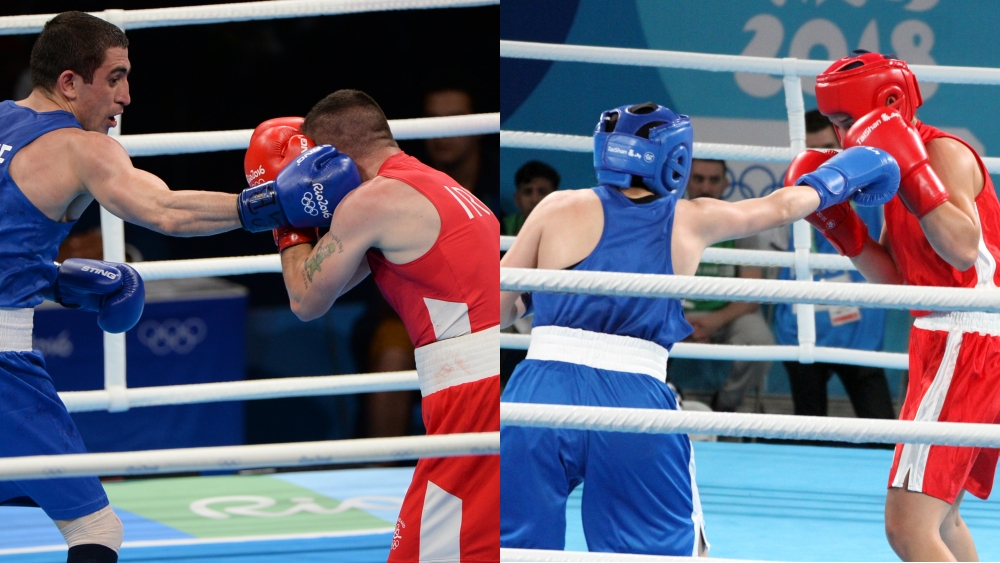Good lateral movement is an essential skill in boxing. The sweet science is about hitting opponents and not getting hit, and lateral movement is one of the tools you use to accomplish this goal. Lateral movement is also used to cut off the ring to prevent opponents from dancing away from you, and it helps to set up your punches. Tyson Fury is an excellent example of a modern boxer with excellent lateral movement.
Lateral movement isn’t just something professional boxers should work on. Improved lateral movement makes you more agile and reduces the risk of injuries while training.
Improve Your Lateral Movement With These Exercises
Ready to improve your lateral movement? Let’s look at some of the best exercises for that:
1) Lateral Shuffle With Resistance Bands
This a great lateral agility drill that gets your heart pumping. It is your simple lateral shuffle, with a resistance band providing constant pressure across your thighs. The exercise engages your quads, glutes, and hip flexors, improving your lateral movement.
Here’s what the exercise looks like:
- Put a resistance band around your legs, right where your thighs and kneecaps meet.
- Stand up with legs a little more than shoulder-width apart with your knees slightly bent. Your toes should be pointing out and away from each other.
- Pick one of your legs about three inches off the ground and move it away from your body before placing it back on the ground. You should now be in a wider stance because of the movement.
- Bring your other leg towards your body by raising it a few inches off the ground and bringing it inward. You should be back to your original stance after this movement. Keep repeating these movements until you cover a set distance or reach a wall.
- Repeat the movement moving in the opposite direction to complete a set. Aim for about three to five sets based on your fitness level.
2) Goblet Squats With Lateral Movement
Goblet squats are a lot like traditional barbell squats, but instead of holding the weight on your shoulders, you hold it in front of your face with your hands. Squats mainly target your quads, glutes, calves, core, and hamstrings. You then add lateral movement to the exercise to get your arms, core, glutes, and calves to do more work.
Here’s how to perform a goblet squat with lateral movement:
- Place a resistance band right above where your thighs and knees meet. Stand up with your legs about hip-width apart and your knees slightly bent. Grab a weight you’re comfortable with and hold it in front of your face.
- With your hands holding on to the weight, hinge your hips as you drop down as if you were sitting on a chair behind you. Keep going until your thighs are at least parallel to the ground.
- At the bottom of your squat, pick one leg a few inches off the ground and move it laterally away from you. Pick up your other leg and move it inward toward your feet are at the same position they were when you first dropped into a squat.
- Stand straight up explosive to return to an upright position. That completes a rep. Perform six to twelve reps moving in one direction, then switch directions and perform the same number of reps to complete a set. Aim for three sets.
3) Lateral Lunges
Lateral lunges are another effective exercise for strengthening the stabilizer muscles that power your lateral movements. These stabilizer muscles are often ignored since most people focus more on the larger muscle groups that support sharp movements. This makes the smaller stabilizer muscles weak and more prone to injuries.
Lateral lunges also help to strengthen muscles in your knees. Studies show lateral lunges are one of the best exercises for people recovering from injuries to the ligaments in their knees. You can also add weights to increase its intensity, but stick to lighter weights you’re comfortable with if you’re new to this exercise.
Here’s how to perform lateral lunges:
- Get into the starting position, standing upright with your feet no more than shoulder-width apart. Pick up a weight if you want, preferably a kettlebell since it puts less strain on your back when performing lateral lunges. Keep the weight by your side.
- Take a big outward step laterally with the leg matching the arm holding the weight and bend your knee slightly as lower your upper body on it.
- Push down the heel of your bent leg to raise your torso back to an upright position. Switch the weight to your other hand and repeat the movement on your other side. Aim for three sets of six to twelve reps.
4) Single-Leg Lateral Hops
Single-leg lateral hops are another effective exercise for improving your lateral movement. It makes your movements quicker and sharper, improving your ability to move laterally. It works off a similar concept as footwork drills performed with tires. You can perform the exercise by strategically placing tires or agility ladders on the floor.
Here’s what the exercise looks like:
- Place your agility ladder on the ground and stand upright with your legs about shoulder-width apart. Place one foot in one of the squares of the ladder while your other foot remains outside.
- Bend your knees slightly and tilt your torso forward slightly to get into the starting position. Hop laterally across the agility trainer, moving toward the direction of the foot in it.
- Go all the way across the ladder until your inside foot is now outside and vice versa. Repeat the movement going in the other direction to complete a set. Aim for three to five sets.
- Feel free to move your arms as you perform the exercise.
5) Lateral Movement With Punches Drill
Here’s a simple lateral movement drill that gets you used to moving sideways as you throw punches. Add this drill to your training drills and your ability to stick and move will greatly improve. Here’s what the exercise looks like:
- Get into your fighting stance and sidestep to your right for 30 seconds. Repeat the movement going to your left for 30 seconds.
- Sidestep to your right for 30 seconds while throwing a jab. Repeat the exercise while moving to your left.
- Sidestep to your right for 30 seconds while throwing a jab-cross combo. Repeat moving to your left.
You may also like:
